Key takeaways:
- Failed marketing campaigns often stem from a lack of understanding of the target audience’s values and emotions.
- Insufficient goal definition, poor timing, and inadequate targeting can lead to ambiguous campaign results.
- Data analysis and feedback are crucial for campaign success, allowing for adjustments and improved audience connection.
- Flexibility in strategies and incorporating feedback from both the audience and team can enhance campaign effectiveness.
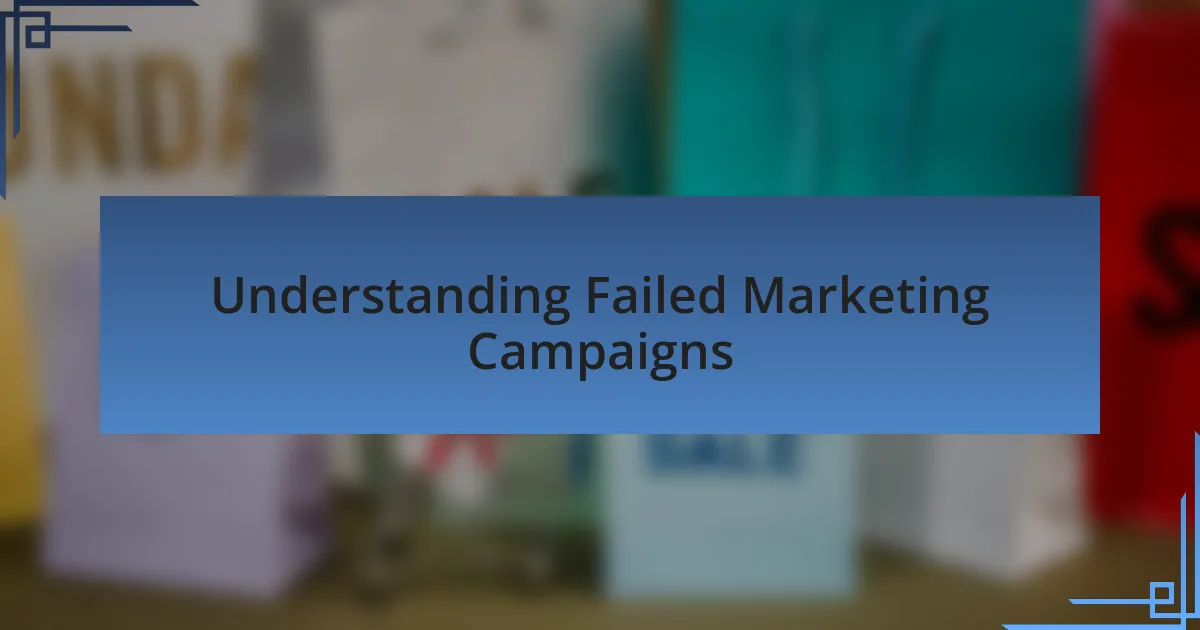
Understanding Failed Marketing Campaigns
Failed marketing campaigns, in my experience, often reveal essential truths about audience perception and brand identity. I recall a time when I witnessed a campaign miss the mark simply because it overlooked the values that their target audience cherished. It left me wondering: How often do we leap ahead without truly understanding who we are speaking to?
Another aspect of failed campaigns is the tendency to ignore feedback. I remember a social media initiative that focused on a catchy slogan but drew criticism for being tone-deaf. It made me realize that listening to our audience is crucial; their insights can guide us toward success. Are we, as marketers, too focused on our creative visions to notice when our messages resonate negatively?
Moreover, the emotional component can’t be underestimated. I’ve seen brands falter when they misjudge how their messages would be received emotionally. I once worked on a campaign that aimed to be humorous but ended up alienating many potential customers. It begs the question: Are we genuinely connecting, or are we driving a wedge with our attempts at engagement?

Reasons for Campaign Failures
One major reason for campaign failures is a lack of clear objectives. I remember collaborating on a campaign that aimed for brand awareness but never defined what success looked like. Without specific goals, the team was lost, and the results were ambiguous at best. How can we measure success if we don’t know what we’re aiming for?
Another critical factor is poor timing. I was involved in a holiday promotion that launched just as the economy dipped, leaving our audience less inclined to spend. It illustrated to me that context matters. Have we considered the external factors that might influence our campaigns?
Moreover, insufficient targeting can derail even the best ideas. I once saw a brilliant concept flop because it was too broad and didn’t resonate with any specific demographic. It got me thinking: are we casting our nets wide but missing the fish we actually want to catch? Focusing on a defined audience can make all the difference in how our campaigns are received.
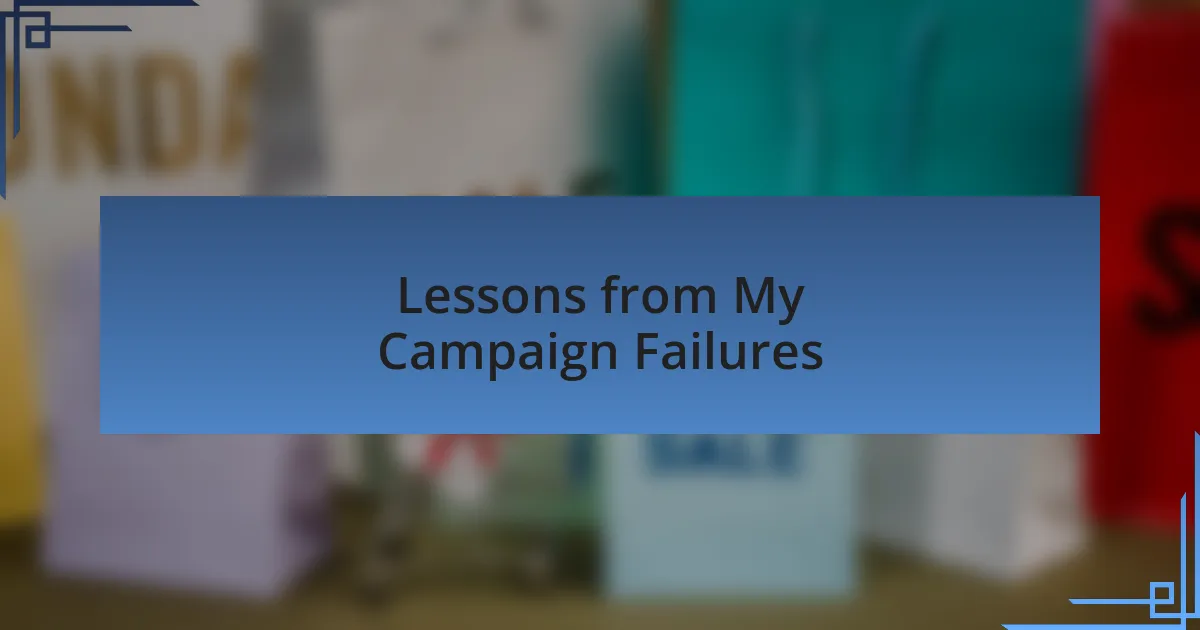
Lessons from My Campaign Failures
It’s incredible what you can learn from a campaign that didn’t pan out. I once launched an email marketing effort that felt perfect on paper. However, we neglected to segment our list properly, blasting out a generic message to everyone. The result? A disheartening open rate that made me question whether we truly understood our audience. When you think about it, how can we engage people with a one-size-fits-all approach?
Another lesson came from a social media campaign I spearheaded that relied too heavily on a flashy video. We underestimated the importance of storytelling. While the visuals were stunning, the message fell flat. Reflecting back, it hit me—did we really connect with our audience’s emotions? People remember stories, not just pretty pictures, and that lesson reshaped how I approach content creation.
Lastly, I learned the hard way about the consequences of neglecting data analysis. I ran a pay-per-click campaign that seemed promising but failed to analyze its performance regularly. We ended up pouring money into ads that weren’t performing. Once I dug into the metrics, I realized we were targeting the wrong keywords altogether. It left me wondering: why didn’t we prioritize ongoing evaluation in the first place? Embracing a culture of constant assessment is something I now advocate for every campaign I manage.
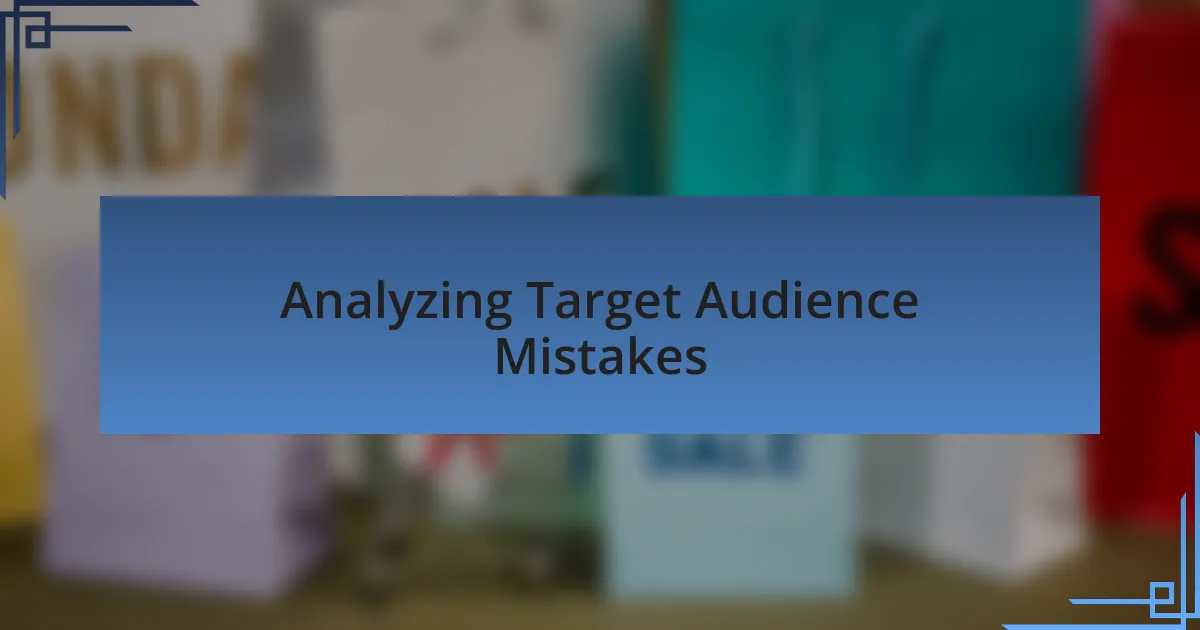
Analyzing Target Audience Mistakes
Diving into the topic of target audience mistakes, I recall a campaign where we aimed to attract a younger demographic. We were so focused on using trending slang and vibrant colors that we overlooked a critical aspect—their actual interests. It became clear that we were trying too hard to fit into their space rather than genuinely understanding what they were passionate about. Could we have built a stronger connection by simply asking for their input or involving them in the creative process?
I also remember an incident where our team launched a survey to gauge audience preferences but failed to promote it adequately. The responses we received were minimal, leading to misguided decisions based on insufficient data. This gap in communication made me realize how crucial it is to not just seek feedback, but to actively encourage it. Have you ever wondered how many great ideas go unnoticed because the audience wasn’t properly engaged?
Another key oversight I experienced was in a demographic assumption. I once determined our target audience based on industry stereotypes, only to find out that our most enthusiastic customers were from an unexpected age group and background. I learned that personas shouldn’t just be created from assumptions but should evolve from real insights and behaviors. How often do we miss the mark by sticking too rigidly to preconceived notions?
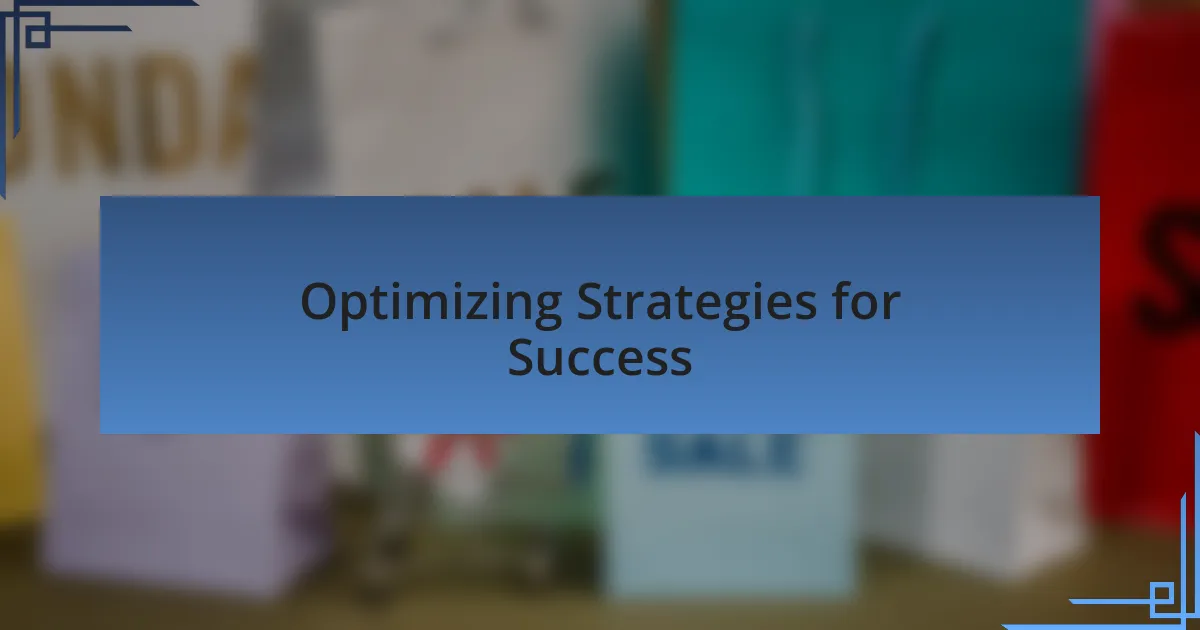
Optimizing Strategies for Success
When it comes to optimizing strategies for success, I’ve learned the importance of flexibility. In one campaign, we set our objectives in stone without allowing room for adjustment. Mid-way through, it became apparent that consumer behavior was shifting. By the time we realized our mistake, we had already wasted time and resources. Could a more adaptable mindset have saved us?
I also recall a project where we invested heavily in paid advertisements, convinced that the reach would translate into conversions. However, we had neglected to analyze our messaging and its resonance with potential buyers. After implementing A/B testing, I saw firsthand the difference that minor tweaks could make. Isn’t it fascinating how a small change can sometimes lead to dramatic results?
Over time, I’ve become a firm believer in the power of analytics. I remember pouring over graphs and metrics late into the night, trying to decipher why one campaign performed significantly better. I learned that data tells a story, and by paying attention to these indicators, we can refine our strategies effectively. What if we treated analytics not just as numbers, but as insights that can illuminate our path to success?
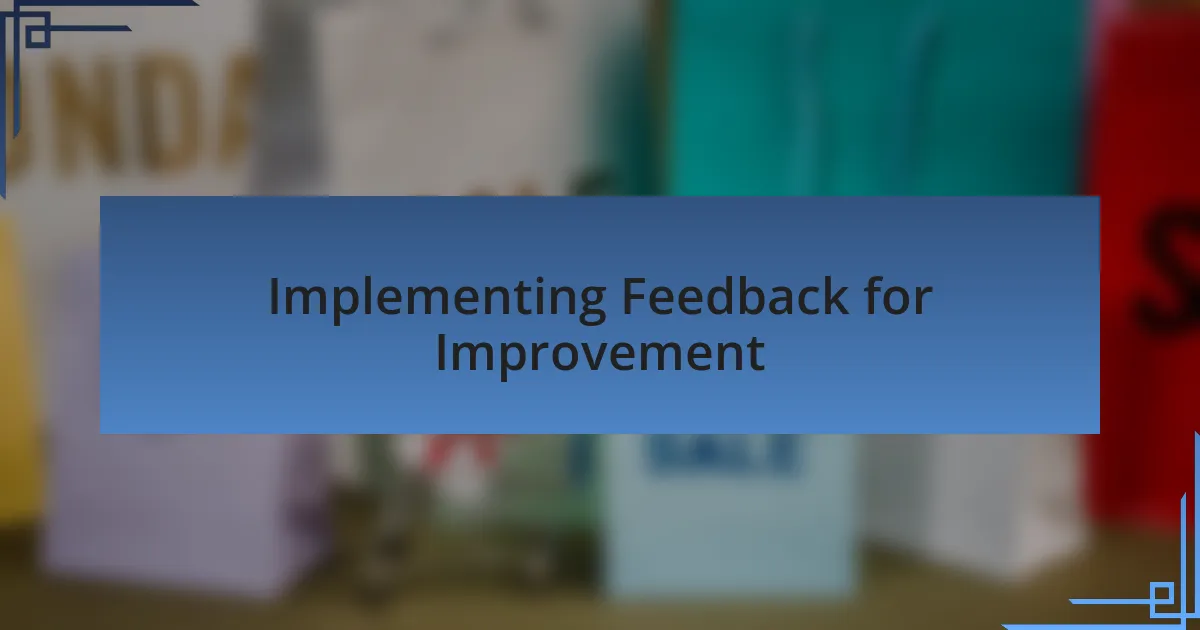
Implementing Feedback for Improvement
Implementing feedback is crucial in honing our strategies. I vividly recall a time when my team conducted a post-campaign survey. The insights were eye-opening; customers voiced frustrations we hadn’t anticipated. It made me wonder, how often do we assume we know what our audience wants without directly asking them?
I’ve also experienced the impact of focusing too much on our own perspective, neglecting the valuable input that comes from collaborators. After a particularly disappointing launch, one of my team members suggested a feedback session. The candid discussions that followed not only improved our approach but also strengthened our team dynamics. Isn’t it amazing how embracing vulnerability can cultivate innovation?
In another instance, we adjusted our social media content based on audience engagement feedback. I remembered feeling nervous about the shift, but the boost in interaction was undeniable. I realized then that fostering a culture of feedback allowed us to evolve naturally. It raises the question: could seeking feedback every step of the way turn failures into stepping stones for our next big success?